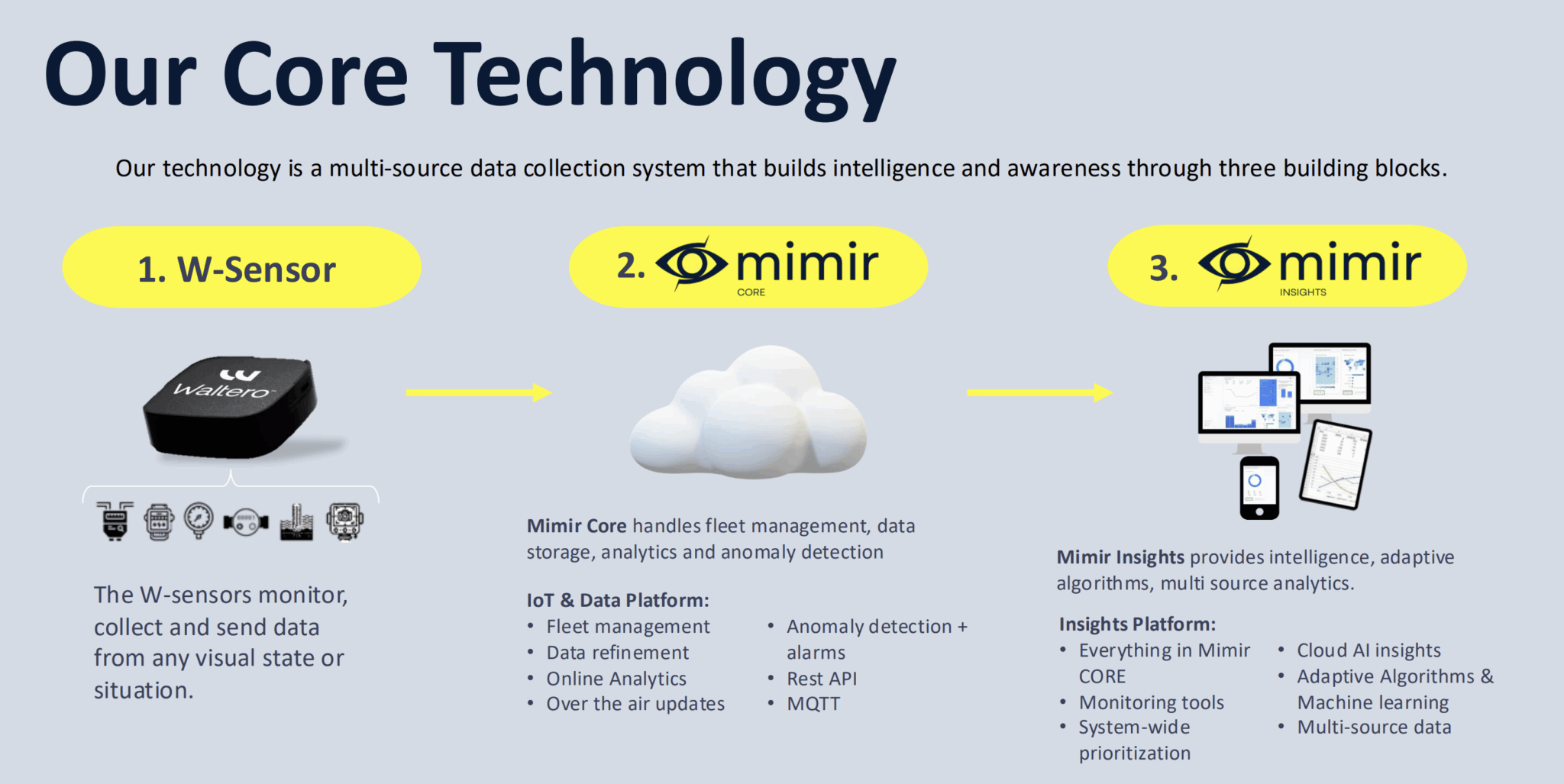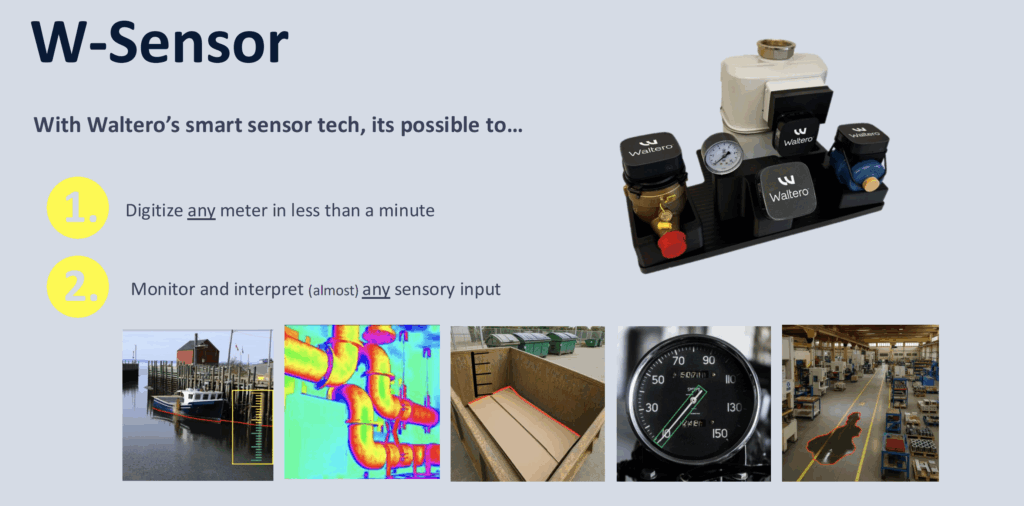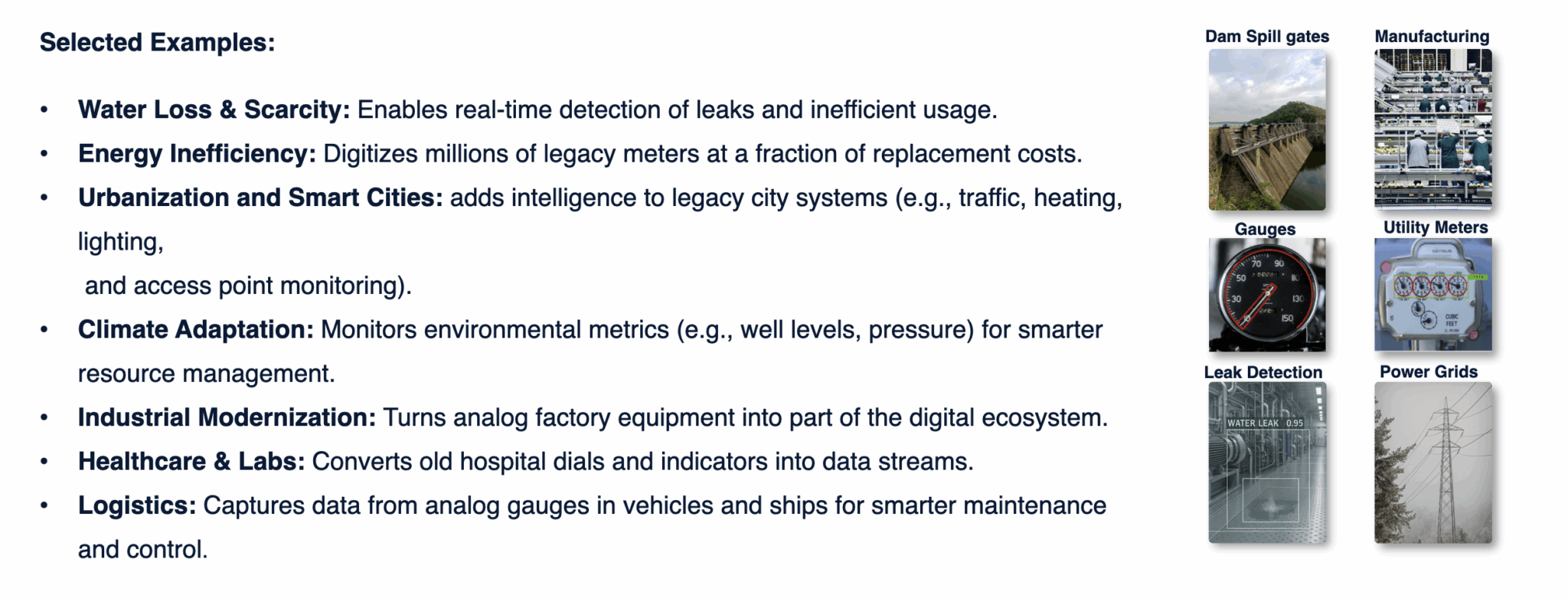IoT Asset Tracking: Maximize Efficiency with Smart IoT Systems

Anders Carlberg
Co-Founder & Director of Customer SuccessIntroduction
At Waltero, we understand how challenging it can be for organizations to keep track of their valuable assets. IoT asset tracking offers a smarter way forward. By using Internet of Things (IoT) sensors and connectivity, companies can monitor the location, status, and usage of physical assets in near real-time.
The result lies in efficient utility asset management and tracking, cost savings, and surely peace of mind. In this article, we’ll explore what IoT asset tracking is, its key components, and how it works. We’ll also dive into the key benefits, application use cases from manufacturing to utilities, and how connected asset tracking IoT solutions are transforming industries.
Understanding IoT Asset Tracking Systems: What They Are & How They Work
IoT asset tracking refers to using internet-connected devices to automatically monitor and manage assets, anything from tools and equipment to vehicles and inventory, in the field or within facilities.
Unlike traditional asset tracking (manual spreadsheets, barcode scans, or occasional audits), IoT-based systems remotely provide continuous, up-to-date data.
![]()
Traditional methods rely on periodic manual checks that only offer intermittent snapshots and require heavy human effort, and are exposed to human error. By contrast, asset tracking solutions using IoT enable automated, constant monitoring of assets, with precision and scale that legacy methods cannot match.
How Does It Work?
In an IoT asset tracking system, asset tracking devices (such as GPS trackers, RFID tags, Bluetooth beacons, or smart sensors) are attached to the assets you want to track. These devices continuously collect data about the asset’s location and often its condition (e.g, temperature, movement, fuel level, pressure, etc). The data is then transmitted wirelessly via networks, for example via cellular (LTE-M, NB-IoT), Wi-Fi, LoRaWAN, Bluetooth, or satellite, to a central IoT platform or cloud system. There, the data is aggregated and made available through software dashboards or integrated into existing asset management software or systems.
![]()
This flow happens on a scheduled or near real-time basis (for instance, sending an update every few minutes or whenever a status change occurs) rather than a purely live video feed. Such up-to-date tracking ensures managers can locate an asset or check its status almost immediately when needed, without physically on-site visits, removing manual labor and gaining time and momentum.
IoT enabled asset tracking is transforming supply chains by simplifying real-time data visibility and accelerating digital transformation across operations. Evolving asset monitoring as a whole.
Key components of an IoT asset tracking system
An IoT asset tracking involves a seamless, automated loop that streamlines how organizations monitor and manage their assets. It begins with smart devices or sensors collecting data on an asset’s location, status, or environment. That data is then transmitted over secure IoT networks, such as cellular, Wi-Fi, or LPWAN, to a centralized cloud platform. From there, the platform analyzes and interprets the incoming information, translating it into clear, actionable insights for users.
This means gaining instant visibility and tracking assets, how they’re performing, and when they might need attention or intervention. By introducing this level of connectivity and intelligence into asset management, companies can move from reactive to proactive approaches, operating with a data-driven strategy, improving efficiency, reducing loss, and enhancing operational control.
The key components are the following:
Connected Tracking Devices:
Physical tags or sensors on each asset. These can range from long-range GPS units (for assets that travel over large distances, like fleet vehicles or shipping containers) to short-range like BLE or RFID tags (for assets within a facility, like tools in a warehouse or medical equipment in a hospital).
The choice of device depends on the range and precision required – GPS and cellular trackers cover vast areas, while Bluetooth Low Energy and RFID are ideal for precise indoor tracking. Some devices also include camera-based smart sensors for utility pumps, flow meters, electricity meters and other environmental conditions (temperature, humidity, vibration, consumption) to monitor asset health.
Network Connectivity:
The communication link that allows devices to send data to the cloud. Options include cellular IoT SIMs (for broad coverage, outdoor assets), Wi-Fi or Ethernet (within buildings), Bluetooth gateways, or low-power wide-area networks (LPWAN) like LoRaWAN or Sigfox for power-efficient long-range transmission. Ofcourse they differentiate in criteria, you may check the complete comparison of IoT connectivity technologies between NB-IoT vs LTE-M vs Sigfox.
Selecting the right connectivity is crucial. For instance, a utility asset in a remote field might use a cellular or LPWAN connection, whereas indoor assets could use campus Wi-Fi.
Reliable connectivity ensures data reaches the central system without significant delays.
IoT Platform / Software:
The centralized system (often cloud-based) that aggregates incoming data, analyzes it, and presents it to users. This software typically provides a unified dashboard where you can see asset locations on a map, search for items, set up alerts (e.g. if an asset leaves a geofenced area or if a sensor reading goes out of range), and generate reports. Advanced platforms might integrate with enterprise systems like ERP or maintenance software, so that IoT data feeds directly into inventory counts or maintenance schedules and interprets collected data to drive effective data-based decisions, which in turn will improve utility data management.
Data Analytics and Edge Processing:
Few IoT asset tracking solutions, such as Mimir, incorporate edge computing, meaning data processing is done in the cloud in near real-time. Edge computing is a growing trend that reduces latency and bandwidth usage. By processing data (for example, a sensor might locally determine when a reading is abnormal and only then send an alert), the system can provide a faster response and even continue to operate if connectivity is temporarily lost. This means critical updates about an asset (like a sudden movement or condition change) can trigger immediate local actions or alerts. Edge AI algorithms can run on the device to detect patterns, like a machine vibration anomaly or leaking detection, and inform you promptly, offering predictive maintenance, a self-learning machine system that adapts to your utility or facility’s regularities.
It’s important to note that while these systems provide very timely information, they typically function in near real-time, delivering up-to-date insights on a frequent schedule, as opposed to an uninterrupted live stream. This approach strikes a balance between responsiveness and practical constraints like network bandwidth and battery life.
Mimir by Waltero: Turning Raw Sensor Data into Actionable Asset Tracking Intelligence
In today’s fast-moving utility and industrial environments, knowing where your assets are and how they’re performing in near real-time is essential, but it’s only half the story. At Waltero, we built Mimir to take IoT asset tracking to the next level. Mimir is our intelligent, cloud-based platform designed to aggregate, analyze, and visualize tracking data from our edge-AI camera-based smart sensor device.

Feeding your team with raw data, Mimir can also distill key insights, showing you the precise status, movement patterns, usage history, and health of every tracked asset. Whether you’re overseeing thousands of smart meters, remote valves, or mobile equipment across multiple sites, Mimir gives you a centralized, user-friendly, and customizable unified dashboard that makes critical information accessible in seconds, hence optimizing asset management efficiency.
Key benefits for asset tracking using Mimir:
Centralized near real-time data insights and tracking of assets across regions or facilities
Automated alerts for unusual movement, inactivity, or asset misuse
Historical trend analysis and audit logs for compliance and planning
Seamless integration with existing systems via APIs
Scalable from pilot projects to national infrastructure deployments

With built-in IoT technology, AI, and self-learning system capabilities. Mimir doesn’t just function as an asset tracking software. It reports, recognizes patterns, detects anomalies, and helps predict issues before they disrupt operations. For asset-intensive sectors like water utilities, energy distribution, and oil & gas, this means reduced downtime, faster issue resolution, and better resource allocation.
Whether you’re looking to modernize your legacy infrastructure or deploy an IoT tracking system from the ground up. Mimir brings clarity, control, and intelligence to every asset in your network without interrupting the ongoing functionality of your factory, facility, or utility.
Apply for Waltero’s Exploratory Kit – Smart Metering Technology to see how visual AI and IoT can modernize your operations.
Key Benefits of IoT Asset Tracking
Investing in IoT asset tracking solutions can digitize utilities and solve many pain points that businesses face when managing physical assets. Here are some of the high-impact benefits and value drivers:
Real-Time Asset Visibility & Inventory Control: IoT tracking provides continuous visibility into where assets are, how they’re being used, and their health status. Water, gas, and oil companies often struggle with tracking widely distributed assets like pumps, flow meters, and pressure systems, many of which are located in remote or hard-to-access areas. Without real-time visibility, teams rely on manual site visits, delayed readings, and outdated spreadsheets, leading to inefficiencies, missed faults, and increased operational costs. IoT asset tracking offers a smarter alternative by providing continuous data on asset location, usage, and performance. This reduces downtime, improves maintenance planning, and ensures that critical infrastructure is always accounted for, without the need for constant physical checks.
Enhanced Security: Maintaining the security of critical assets like valves, meters, regulators, and equipment within utility facilities and energy distribution networks is a constant challenge. Without real-time awareness, unauthorized movement, tampering, or operational anomalies can go undetected, posing risks to service reliability and safety. IoT asset tracking smart sensors enhance security by enabling geofencing, automated alerts, and continuous monitoring of equipment status and location. This allows operators to respond quickly to unusual activity, reduce manual inspection efforts, and protect essential infrastructure from disruption or misuse.
Predictive Maintenance & Asset Longevity: IoT asset tracking gathers data on asset condition and usage. For example, sensors can monitor the runtime of a machine, the temperature of a refrigerated container, or the vibration of an engine. By analyzing this data, companies can shift from routine scheduled maintenance to condition-based maintenance. In other words, maintenance can be performed exactly when and where needed, based on real usage patterns or environmental conditions, rather than guesswork or fixed intervals. This proactive maintenance approach extends the lifespan of assets and reduces unplanned downtime, since issues can be detected and addressed before a failure occurs. It also means less money spent on unnecessary maintenance and fewer surprises that halt operations.
Operational Efficiency & Cost Savings: Perhaps the most compelling benefit, all of the above improvements lead to significant cost and efficiency gains. With assets in the right place at the right time, employees work more productively and projects avoid delays. Automated tracking reduces the labor needed for manual asset checks and paperwork, cutting labor costs and human errors. Better asset utilization (knowing exactly what is available and in use) means fewer idle assets and wiser capital spending. The cumulative effect is a leaner operation and a strong return on investment. In fact, a recent industry report found that 84% of businesses could achieve significant cost savings and efficiency improvements by adopting IoT technologies for tracking assets. The data-driven insights from IoT asset tracking help managers make smarter decisions, optimizing routes for delivery trucks, consolidating inventory, or reallocating underused equipment. All of which boost operational efficiency.
Beyond these, IoT asset tracking can also support compliance by automatically logging asset history and usage, which is useful in regulated industries like healthcare or food services. It provides an audit trail to prove assets were where they should be and were maintained properly.
IoT enabled asset tracking drives supply chain transformation, simplifying IoT to accelerate your digital transformation.
Use Cases and Applications of IoT Asset Tracking
At Waltero, we believe so strongly in the potential of IoT for utilities that we’ve developed an Exploratory Kit for Smart Metering Technology to help organizations pilot these kinds of solutions in a hands-on way.
By applying IoT asset tracking in utility operations, companies can reduce downtime by spotting failing equipment early, enhance safety with real-time alerts on abnormal conditions, and improve service delivery to customers.

These examples barely scratch the surface. IoT asset tracking systems are also employed in retail (for inventory and shopping cart tracking), aerospace (for tool tracking in aircraft maintenance), agriculture (tracking farm equipment and even cattle or crop conditions), and more.
IoT asset tracking is a versatile solution that brings value to many sectors. Here are a few key industries and scenarios where asset tracking IoT solutions are making a difference:
Manufacturing and Construction: Factories and construction sites use IoT tracking to monitor equipment, tools, and materials across large facilities or multiple job sites. For a manufacturing plant, critical machines and parts can be tracked to ensure they are at the right station when needed, preventing production bottlenecks. In construction, managers get real-time visibility of valuable equipment (like generators or excavators) spread across the field. This visibility ensures high-value assets are secure against theft or unauthorized use and are optimally utilized to avoid project delays. It also helps in maintenance. e.g., tracking engine hours on machines to schedule servicing before breakdowns occur.
Transportation & Logistics: Perhaps one of the earliest adopters, the logistics industry benefits enormously from IoT asset tracking. Shipping companies attach IoT trackers to cargo containers, pallets, and packages to monitor their journey from origin to destination. Fleet operators use GPS trackers on trucks, delivery vans, or rail cars to monitor their routes and conditions.
With real-time tracking data, fleet managers can optimize routes, respond to delays, and provide customers with accurate delivery ETAs. Environmental sensors also monitor conditions like temperature and humidity for sensitive goods in transit (such as food, pharmaceuticals, or electronics). If a refrigerated truck’s temperature goes out of range, an alert allows quick corrective action to save the cargo. Overall, IoT tracking in logistics reduces losses, improves supply chain transparency, and cuts transportation costs by improving route and asset utilization.Healthcare and Medical Asset Management: Hospitals and healthcare facilities rely on many mobile assets, ventilators, IV pumps, diagnostic devices, etc. Losing track of this critical equipment can literally be life-threatening if it causes care delays. IoT asset tracking is used in hospitals to locate critical equipment instantly and ensure availability when a patient needs it. For example, a nurse can quickly find the nearest available wheelchair via a tracking app instead of searching multiple floors.
Beyond location, IoT sensors can monitor equipment usage and condition (e.g., a temperature-controlled storage unit for vaccines). This leads to better inventory management of medical supplies and timely maintenance of devices. The result is improved patient care efficiency and fewer resources wasted on replacing “lost” equipment that was simply misplaced. Additionally, in the emerging field of remote patient monitoring and telehealth devices, IoT tracking helps keep tabs on distributed medical devices, ensuring they are functioning and in the right location, and even allowing remote firmware updates to those devices for reliability and security.Utilities and Smart Metering: Utility companies manage a vast network of assets spread over wide geographic areas, from power transformers and water pipelines to service vehicles and meters at customer premises. Utility asset tracking via IoT makes it feasible to keep an eye on all these distributed assets. For instance, utilities can attach IoT sensors to transformers, generators, or pipeline valves to monitor their status and location. This provides critical data to ensure each asset remains reliable and is performing optimally.
In the realm of smart metering, IoT devices track electricity, gas, or water usage in near real-time and report that data back to the utility company. This not only eliminates manual meter reading but also helps detect issues like outages or leaks much faster. Utilities gain improved visibility into their infrastructure, for example, knowing the exact location of a fault in the grid or tracking the movement of field service equipment.
Anywhere you have valuable assets that need constant remote monitoring or data collection, IoT tracking can likely add value.
Conclusion
IoT asset tracking solutions are ushering in a new era where every important asset can be accounted for and optimized in near real-time. The organizations that embrace these smart technologies will have a clear edge, operating with better information, agility, and confidence.
At Waltero, we’re excited to be part of this evolution, and we’re ready to help you unlock the full potential of your high-value assets through IoT.
As we move forward, expect IoT-based tracking to become a standard part of doing business, much like computers and basic internet are today. The sooner you integrate these smart tracking capabilities, the sooner you unlock the value they promise.
%3Aformat(webp)&w=3840&q=75)



